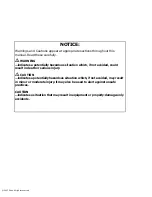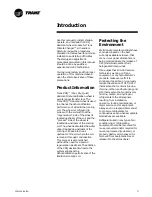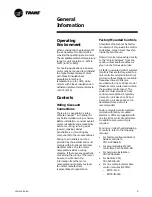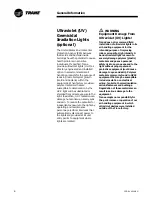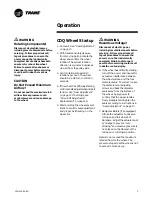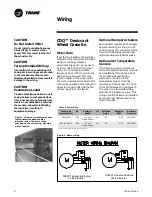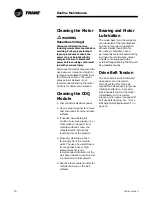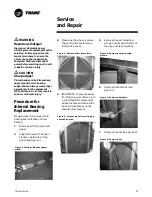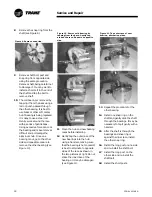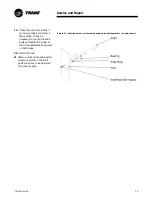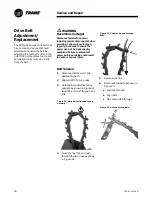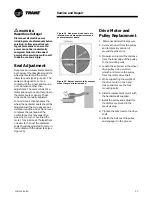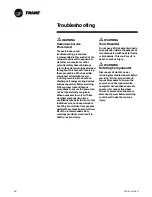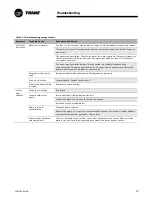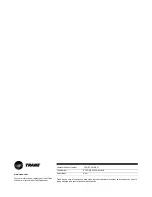
CDQ-SVX01A-EN
9
Routine
Maintenance
WARNING
Hazardous Voltage!
Disconnect all electric power,
including remote disconnects before
servicing. Follow proper lockout/
tagout procedures to ensure the
power can not be inadvertently
energized. Failure to disconnect
power before servicing could result
in death or serious injury.
WARNING!
Protect Eyes!
Always wear proper eye protection
when blowing compressed air or
water. Failure to wear proper
personal protection equipment (PPE)
could result in death or serious
injury.
CAUTION
Cleaners, Solvents and
Excess Pressure!
Do not use acid based cleaners,
aromatic solvents, steam, or
temperatures in excess of 170°F to
clean wheel. Do not use air or water
with pressures in excess of 20 PSIG.
Doing so may cause damage to the
wheel!
CAUTION!
Keep Wheel Clean!
Accumulated dirt and debris may
result in reduced airflow and/or
increased pressure drop across the
wheel. Increased pressure drop can
result in permanent damage to the
wheel or module.
Cleaning the
Desiccant Wheel
If routine inspection indicates there
is dirt or dust buildup in the wheel,
clean the wheel using the following
procedure:
Vacuum the wheel
1
Using a standard shop vacuum,
vacuum any debris from both
faces of the wheel. Slowly work
around the entire face of the
wheel to complete the
procedure. Do not damage
wheel face by excessive
pressure of the vacuum nozzle
on the wheel face.
2
Using 20 psig clean dry air, and a
small air nozzle, blow air through
one face of the wheel. At a
similar location on the opposite
side of the wheel, gently apply a
shop vacuum to “receive” any
remaining debris exiting the
wheel.
In most instances this should
adequately clean the wheel. In the
event the wheel is subject to an
aerosol, smoke or other material that
coats the wheel, it can be washed
with water and/or a mild detergent.
The desiccant wheel can be washed
thoroughly without affecting the
performance of the wheel. The wheel
will simply dry out following a
washing procedure and resume
dehumidification without any
deviation in performance.
If the desiccant wheel can be easily
removed from the cassette or unit, it
is recommended to do so to facilitate
the washing process. However, in
most cases, it is impractical to
remove larger wheels and therefore,
the washing procedure must take
place within the air handling unit and
provisions need to be made to collect
the runoff water from the bottom of
the unit.
Washing the wheel
1
Disconnect all power.
2
Shield or remove all electrical
components with plastic
sheeting. Shield the bearing
with plastic sheeting.
Precautions should be taken to
ensure the motor windings and
capacitor do not get wet.
3
Ensure that an adequate
drainage system exists to
collect runoff water from the
bottom of the unit.
4
Using standard pressure water
(do not use a high pressure
washer) and working from the
lower half of the wheel, wash
the wheel with a standard
“garden” nozzle to flush any
debris trapped within the flutes
of the wheel. Minimize water
contact with the seals. Wash
from one side and vacuum up
water from the other side with a
wet vacuum.
5
Once the entire process side is
adequately washed, rotate the
wheel one half turn and wash
the section that was at the top.
6
After washing, there will be a
temporary derate in
performance as the wheel dries
out. To expedite the dry out
time, regeneration preheat
should be activated if it was
provided.


